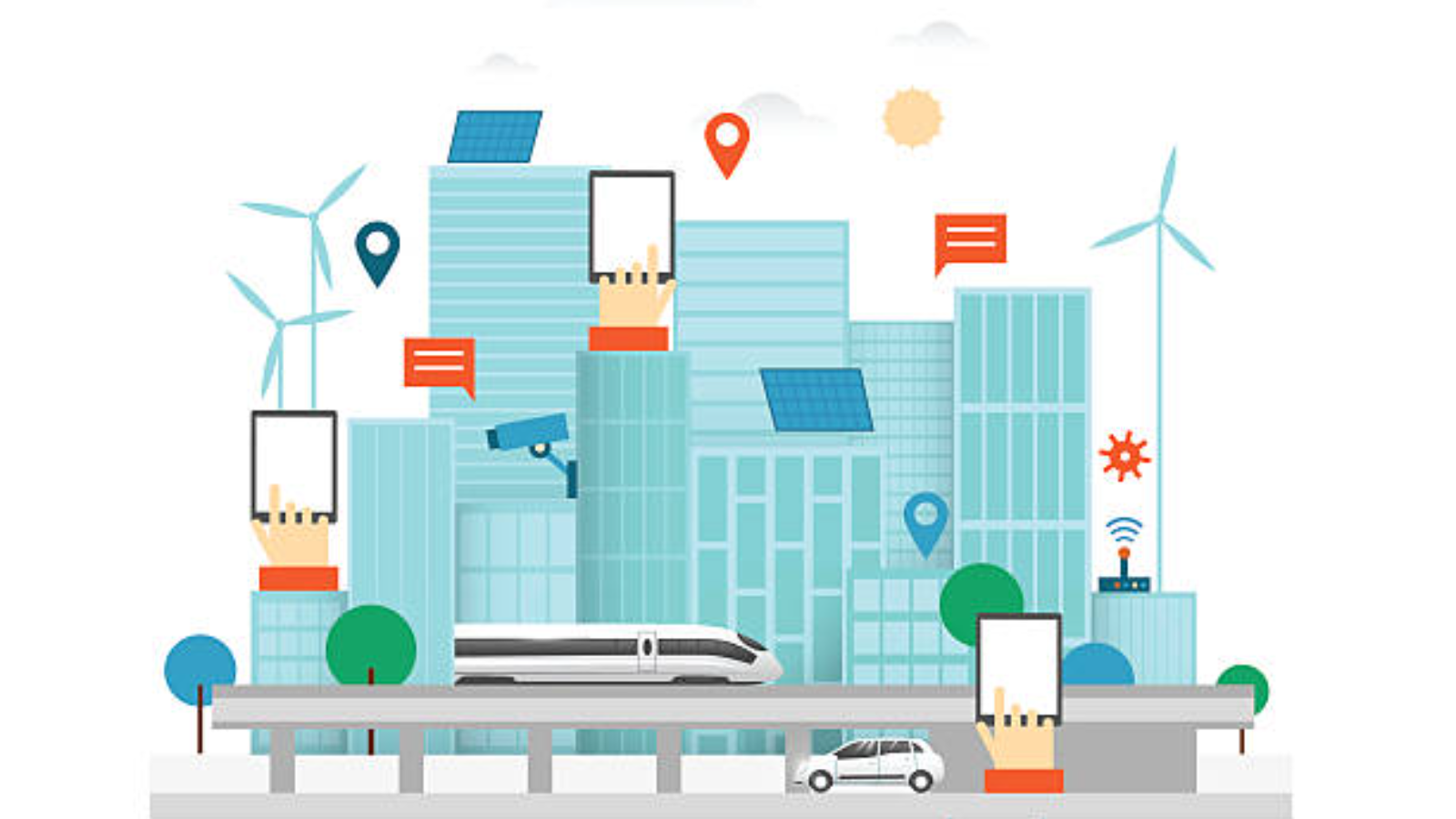In this Article
Introduction
In an era where technology is seamlessly integrating with our daily lives, the concept of smart cities is becoming more than just a futuristic vision. It’s a tangible reality that promises to revolutionize urban living. But what does a smart city look like? This article will delve into the core components that define a smart city, offering a clear and informative picture of how these urban marvels function.
From intelligent infrastructure to sustainable energy solutions, we’ll explore the various facets that make a city “smart.”
What Does a Smart City Look Like?
1. Intelligent Infrastructure
Intelligent infrastructure integrates advanced technology to optimize urban systems, making cities more efficient, sustainable, and livable.
Smart Transportation Systems:
- Traffic Management: Real-time data analytics and AI-powered systems help manage traffic flow, reducing congestion and improving commute times. These systems use sensors and cameras to monitor traffic conditions, adjust traffic signals dynamically, and provide real-time updates to drivers through digital signage and mobile apps.
- Electric and Autonomous Vehicles: Smart cities promote the use of electric and autonomous vehicles, reducing carbon emissions and fostering sustainable urban mobility. Charging stations are strategically placed throughout the city, and autonomous shuttles provide convenient and eco-friendly transportation options.
Smart Buildings:
- Energy Efficiency: Buildings equipped with smart sensors and automated systems optimize energy usage, reducing waste and lowering utility costs. These systems can adjust heating, cooling, and lighting based on occupancy and external weather conditions, significantly cutting down energy consumption.
- Comfort and Convenience: Smart home technologies offer personalized experiences, from climate control to automated lighting and entertainment systems. Residents can control various aspects of their homes through mobile apps or voice commands, enhancing comfort and convenience.
2. Sustainable Energy Solutions
Sustainable energy solutions power smart cities with renewable and efficient sources, ensuring a cleaner and more resilient urban environment.
Renewable Energy Sources:
- Solar and Wind Power: Smart cities harness renewable energy sources like solar and wind to meet their energy needs, reducing reliance on fossil fuels. Solar panels are installed on rooftops and in solar farms, while wind turbines are strategically placed to capture wind energy.
- Energy Storage Systems: Advanced battery technologies store excess energy, ensuring a consistent and reliable power supply. These systems can balance supply and demand, reducing the need for fossil fuel-based power plants during peak times.
Smart Grids:
- Efficient Energy Distribution: Smart grids use real-time data to manage and distribute energy more efficiently, minimizing losses and improving reliability. They can detect and respond to outages quickly, reducing downtime and enhancing the stability of the power supply.
- Demand Response: These systems can adjust energy distribution based on consumption patterns, optimizing energy use and reducing peak demand. Consumers are incentivized to shift their usage to off-peak times, easing the load on the grid and reducing overall energy costs.
3. Enhanced Public Services
Enhanced public services improve access and quality through technology, making essential services more efficient and accessible.
Healthcare:
- Telemedicine: Smart cities offer telemedicine services, providing remote consultations and reducing the need for physical visits to healthcare facilities. This makes healthcare more accessible, especially for those living in remote areas or with mobility issues.
- Health Monitoring: Wearable devices and smart sensors monitor health parameters in real time, enabling early detection and timely intervention. These devices can alert users and healthcare providers to potential health issues, allowing for proactive management and treatment.
Education:
- E-Learning Platforms: Digital learning platforms offer personalized and accessible education, bridging gaps and ensuring equal opportunities for all. Students can access a wealth of resources and interactive content from anywhere, enhancing the learning experience.
- Smart Classrooms: IoT-enabled classrooms provide interactive and engaging learning experiences, enhancing the overall quality of education. Features such as digital whiteboards, real-time collaboration tools, and automated attendance tracking improve both teaching and learning.
Conclusion
Smart cities represent the future of urban living, aiming to create sustainable, efficient, and livable environments through the integration of advanced technologies. By leveraging intelligent infrastructure, sustainable energy solutions, and enhanced public services, smart cities address the challenges of urbanization, optimize resource use, and minimize environmental impact. Citizen engagement is crucial in shaping these solutions to meet local needs, fostering innovation, economic growth, and an improved standard of living. As we move forward, the continued development and implementation of smart city technologies will play a pivotal role in shaping the cities of tomorrow.
How Can We Help?
At AlphaX, we understand the complexities and challenges of transforming urban spaces into smart cities. Our comprehensive ecosystem offers innovative solutions tailored to meet the unique needs of each city. From smart transportation systems to sustainable energy solutions, we provide the tools and expertise to make your city smarter and more efficient.
For more information on how we can assist you in your smart city journey, visit our contact page.
References
Related Blog Posts
How Smart Cities Connect: Getting Started with Edge AI and IoT Technology
How to Get Started with Edge AI and IoT Technologies in Smart Cities: Overcoming Integration Challenges In recent years, the concept of smart cities has evolved from a futuristic Read More
5 Step Strategy: Ensuring Security and Privacy in 15-Minute Smart Cities
Introduction Ensuring security and privacy in 15-minute smart cities is a critical challenge as urban areas become increasingly connected through IoT and edge AI technologies. These cities aim to Read More
What is a smart city and the challenge of legacy systems
How to Get Started with Integrating Legacy Systems in Smart Cities Smart cities are transforming urban landscapes by leveraging technology to improve the quality of life for residents. However, Read More




